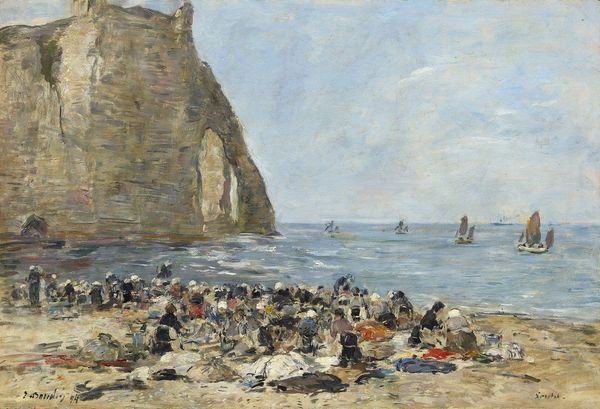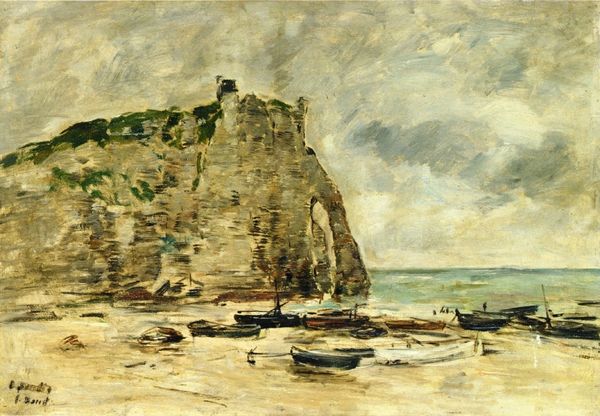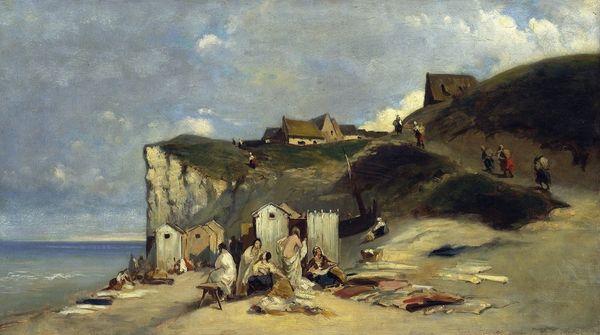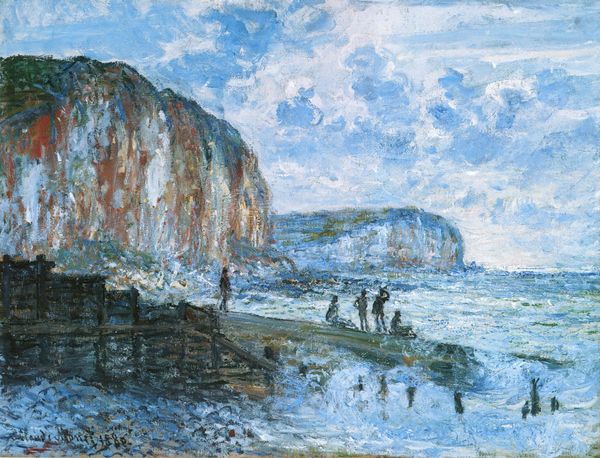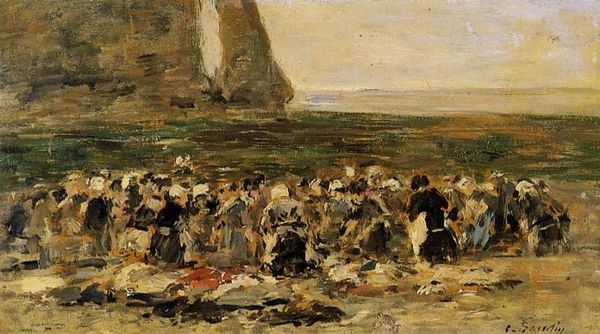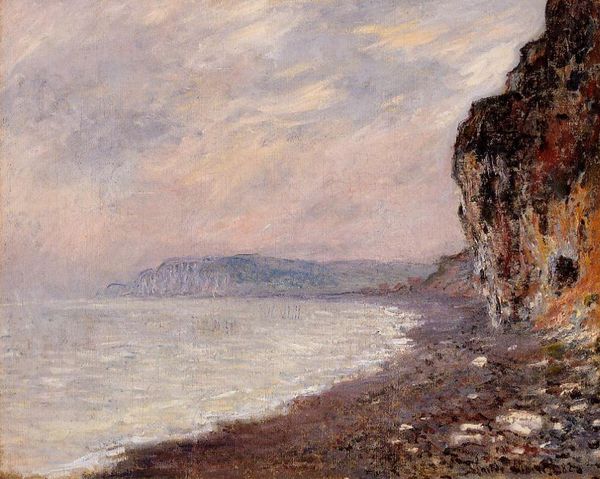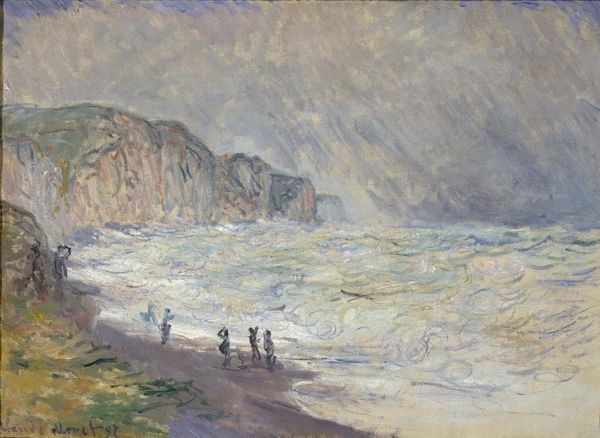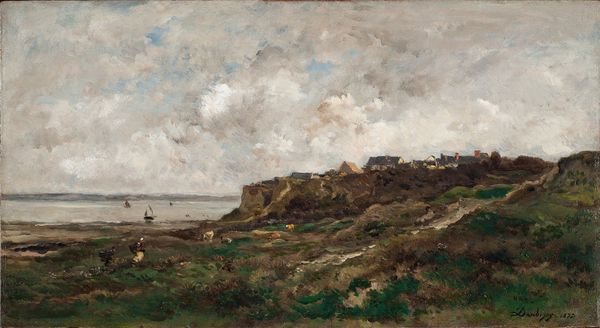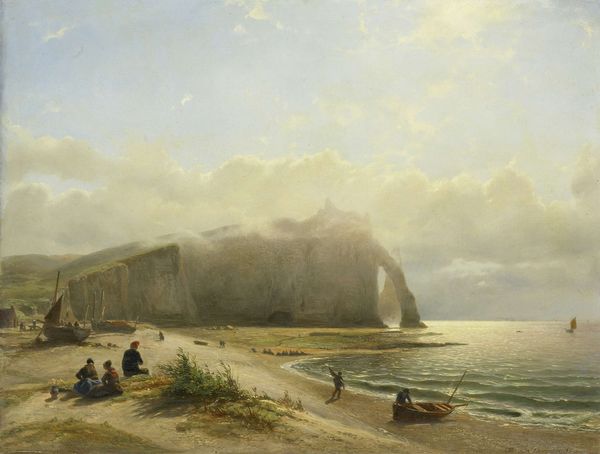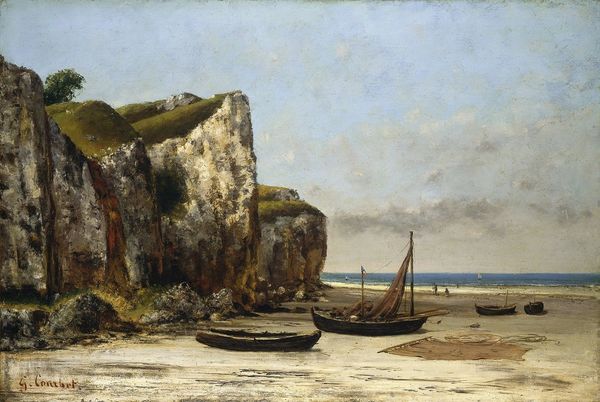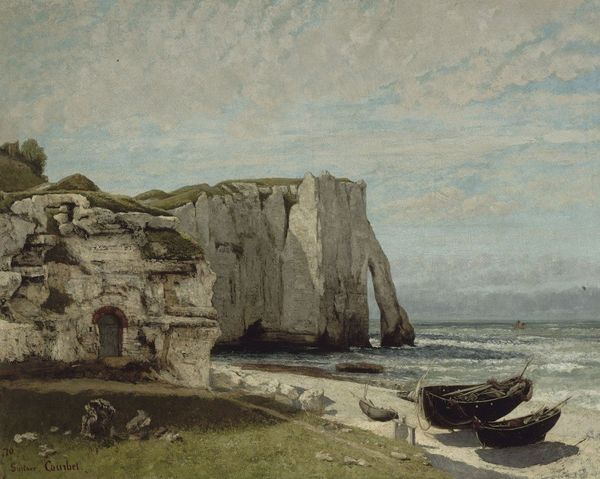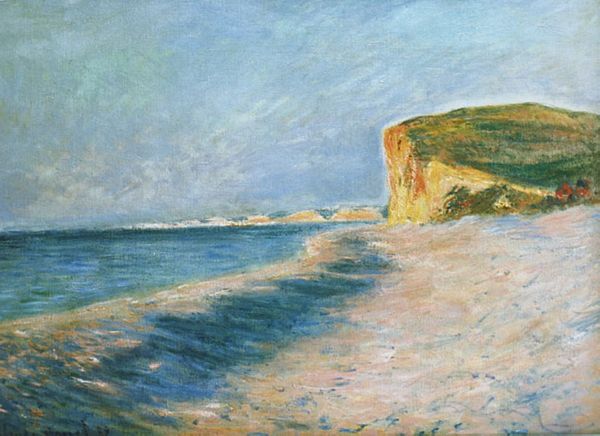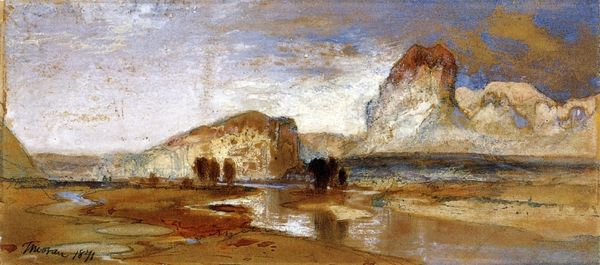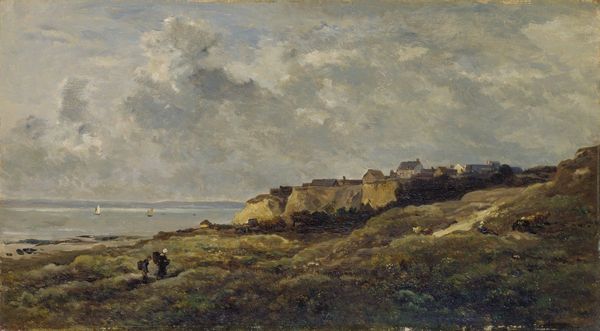
painting, plein-air, oil-paint
#
painting
#
impressionism
#
plein-air
#
oil-paint
#
landscape
#
impressionist landscape
#
oil painting
#
rock
#
genre-painting
#
realism
Copyright: Public domain
Editor: Here we have Eugène Boudin's "The Laundresses of Etretat" from 1890, rendered in oil on canvas, and it really evokes a sense of everyday life by the sea. The composition, especially the way he groups these working women together, really stands out. What do you see in this piece, beyond just a pretty seascape? Curator: It’s crucial to consider the social realities behind Boudin’s Impressionistic brushstrokes. While the landscape might seem serene, focusing solely on its aesthetic qualities would obscure the labor and the lived experiences of these women. Editor: You mean their work as laundresses? Curator: Exactly. How does situating this scene within the context of late 19th-century France change our perspective? These weren't leisurely beachgoers. They were working-class women performing arduous labor, likely for very little pay, in a society deeply divided by class and gender. Boudin’s choice to depict them, even in this fleeting, Impressionistic style, acknowledges their presence and their struggle. The painting, in effect, documents their social position, their toil made visible. Editor: So it’s not just a landscape, it’s also a record of women's labor? Curator: Precisely. Boudin captures a moment, yes, but that moment is charged with the reality of women's roles and responsibilities within a specific historical context. Considering the economic disparities and limited opportunities for women at the time encourages us to interpret the painting not merely as an attractive vista but also as a subtle commentary on the working class. What do you think about how race or even geographical background plays a role in how the workers were exploited at that time? Editor: That adds a whole new dimension. I initially saw just a beautiful beach, but now I understand that there's a complex narrative about labor and gender embedded in the art. Curator: Exactly. Art becomes more meaningful when we explore the intersectional dimensions it exposes.
Comments
No comments
Be the first to comment and join the conversation on the ultimate creative platform.
